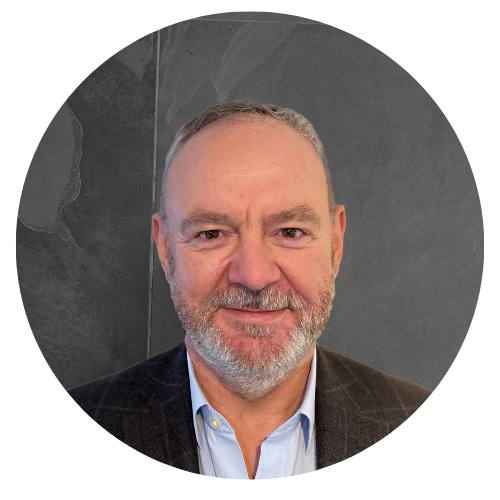Neil Kelly, CEO & Founder of Talent Sandbox, talks to TALiNT Partners Chief Executive Ken Brotherston about how TA is changing to deliver better business value.
Neil Kelly has learned a thing or two about building TA function and capability during 25 years in the industry, including roles as the leader of global and regional talent acquisition teams for major corporations. He is the founder of two businesses which channel his passion for building successful TA teams – Talent Sandbox, an online learning platform for TA professionals, and Vector Partners, an international talent consulting business with a focus on life sciences.
He spoke to TALiNT’s Ken Brotherston about the technology-driven transformation underway in the sector, how the C-suite can get more value from their talent teams and what to expect in the next two years.
Ken Brotherston: From your perspective, why is talent acquisition so critical to organisational success?
Neil Kelly: Talent acquisition has a very enviable position overlooking the whole landscape of an organisation; not many functions have that kind of visibility or influence. Ultimately, if you don’t have the right talent at the right moment in the right place, it is very likely that your business will fail.
KB: Talent acquisition has always been important, but it’s arguably never been more important than it is now. There are many examples of companies that laid off a lot of people during the pandemic, then, when they wanted to rehire them, the staff weren’t available and this massively impacted service delivery.
NK: The reality is that we don’t learn from our mistakes. We’re going through something similar at the moment. There’s a small downturn in some industries, which has led to an immediate 25% to 50% cut in the TA workforce. What happens in Q1 next year if we go into growth? We have to rehire, retrain, relearn.
KB: What do you see as the key challenges facing TA functions regarding expertise and capabilities?
NK: TA has become significantly more complicated and sophisticated in the past three to four years in particular due to technological change. We are going through a transformation – the transactional skills of the past are not needed as much as new digital skills which touch on marketing, data analytics and insights. The challenge here is: can TA keep up with the growth and the demand for these skills?
“Recruiters believe they have to follow a process when what is actually needed is for them to think, learn and innovate, but they have to be given enough freedom to do that.”
KB: What about softer skills around leadership, transformation, influence, and engagement? How are you seeing those evolve?
NK: Soft skills are now the key currency, but organisations are often unsure what soft skills they need and how those skills weave into talent acquisition, because they have come from a more traditional hard skills background. We need recruiters and specifically TA leaders to become more entrepreneurial which translates to creative and original, to be curious about technology, and to be able to decide how to use the tools around them in a more intuitive way but at the same time be able to work towards global standards.
KB: A recruiter may be very good at implementing new technology but not curious about what other technology is out there and how it can be applied. It’s that combination of capability and curiosity that delivers results.
NK: This is the nub of the problem; we’ve got tens of thousands of recruiters who believe they have to follow a process when what is actually needed is for them to think and learn and innovate, but they have to be given enough freedom to do that. We now believe standards of talent acquisition can play a key role in an organisation, with the room for recruiters to operate with the enablement and technology at their fingertips. Although we need to still educate the ‘why’ even though they might have tools that help with the ‘what’.
KB: Do you ever see TA developing a standard qualification in a similar vein to accountancy, marketing or HR?
NK: That would certainly drive consistency; however this is also a long road to gain alignment of what those standards are globally. Our aim as a business is that talent acquisition is enabled with the right skills, within the context of their organisation and then enabled with the right technology. Although following our search of over 75+ interviews with leaders, the general consensus that a common standard would speeds up transformation, because standards create consistency around the candidate and customer experience. We’ve seen the efficiency improvements in a number of businesses globally and in fact these changes have seen significant effectiveness in other functional areas, as you mentioned.
KB: What hurdles are in the way of delivering a better standard of talent acquisition?
NK: Firstly, we need to understand what skills are required, what is the baseline, and what the gold standard looks like. We’ve just launched our skills framework within Talent Sandbox, which is now available to our customers and prospective customers, and that is our first iteration of defining the skills we believe are required for the future. We have used the framework as the basis for workshops with TA leadership teams, creating space for them to think about the future and the development needs of their function. As an industry, we need to embrace a common language and to encourage collaboration across associations and institutions internationally. Of course, there are also legal differences to consider when working across jurisdictions.
“There will be fewer recruiters, but those recruiters will be much more highly skilled, so hopefully their overall value to an organisation will increase.”
TA has historically been less valued than other aspects of HR from an organisational perspective, which is evident in the current situation where companies have suddenly cut headcount. But the value that talent acquisition brings to a business has increased significantly in recent years, we still have some ways to go until talent acquisition is seen as a business enabler.
We are in the golden age of TA and the opportunities are there for the taking to make a huge business impact.
KB: Sometimes TA professionals can be their own worst enemies. Having progressed through HR or recruitment roles, they tend to have a service mentality which makes it hard to say ‘no’, so they get overwhelmed and overstretched. How do you break that pattern?
NK: First of all, we need to better understand human-technology interaction. AI may well help with the question you are asking, in terms of the ability to harness process. The interface between humans and technology needs to be fixed because TA is currently one of the most complicated jobs in HR, involving numerous systems for interviewing, sourcing talent and all the other aspects of the role. Some technologies are being developed that allows interfaces for some aspects of the role, however again it still requires a human to facilitate this tech. Going back to my early comments, if we continue to run forward, without understanding the why, we will never move up on the value chain.
KB: What advice would you give to the C-suite to get more from their TA function?
NK: Get organised around your strategic workforce plan. Don’t leave this to HR. If you have a robust workforce plan that is aligned to your business strategy, everything thereafter in terms of having the time to acquire the right talent will be much easier.
KB: What advice would you give to TA leaders in terms of key ways that they can build the capability of their function?
NK: As a TA leader, you can craft many more areas of added value to your function, although this starts with the current state skills using a framework, educating on the standards, ensuring the technology interfaces are correct. However ultimately you then need to embed every aspect which will form your overall enablement, which will shift the function to a place of real value
KB: How do you see the industry changing within the next two years?
NK: We will see the biggest shift of skills required for talent acquisition. We see the roles becoming more specialised, highly skilled talent, who are adding significant value into their organisation. Yes, the industry may well have less 360 traditional recruiters, however those employees who have reskilled will very likely be paid more and importantly deliver higher productivity, therefore overall expenditure drops for a business.
At a Glance
- The TA function is pivotal to success or failure across any organisation. Businesses are becoming increasingly aware that a lack of TA talent and resources can result in an inability to deliver products or services.
- The TA function is significantly more complex than it was three to four years ago primarily due to the need to understand how to assess and deploy new technology.
- The TA skill set is starting to embrace aspects of marketing, data extraction, data analysis, and insights. These are often not the core skill sets of recruiters.
- A combination of soft and hard skills is essential. For example, to fully optimise technology, curiosity and capability yields results. Each on its own isn’t enough.
- Consistent standards are important as they enable growth and consistency, but they shouldn’t be set in stone. Standards need to evolve and be challenged.
- What gets in the way of delivering a better standard of TA? Lack of common language; lack of collaboration across HR institutions; the need to learn how to better harness technology.
- In two years, there will be fewer recruiters with traditional skills, more specialised skills who are creating greater value and impact. AI will improve the personalisation and therefore impact overall experiences.
Top Takeaways
For the C-suite: How do we get more value from our TA function?
Throwing more money at talent acquisition isn’t a cure-all. Take ownership of your workforce plan (don’t leave it to HR) and align it to your business strategy. This will make getting the right talent at the right time much easier.
For TA leaders: How do we build capability?
Key ways you can impact your organisation and look for ways to deliver better value from what you do. Look at the skills you’ve got and the skills you need, benchmark where you are, and take the steps to reskill your function in a direction that creates real value.







